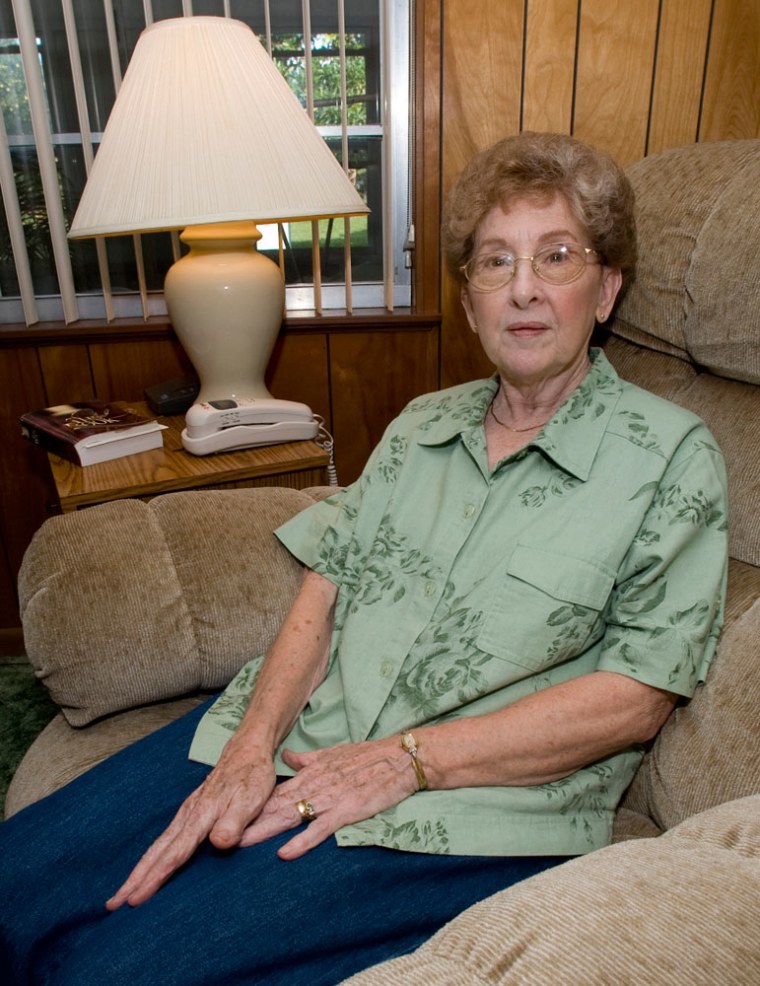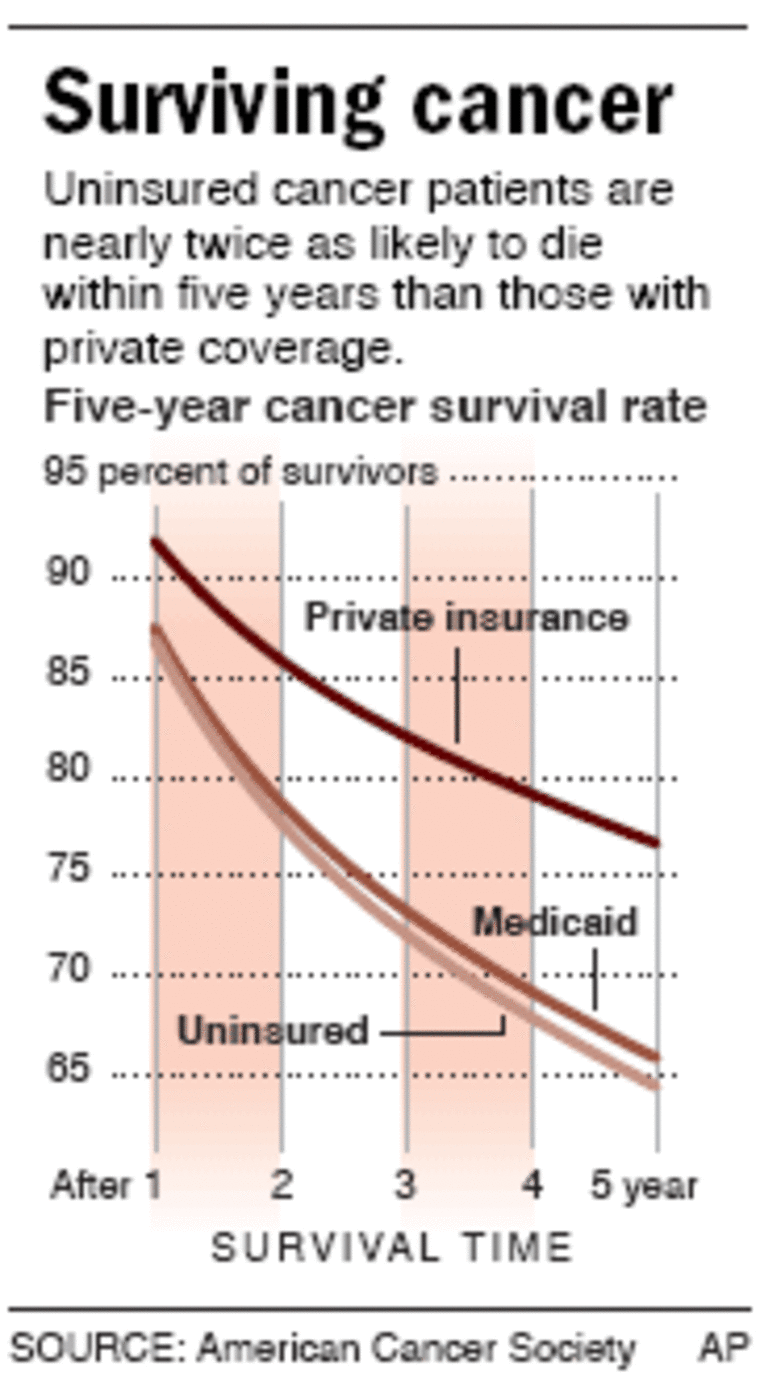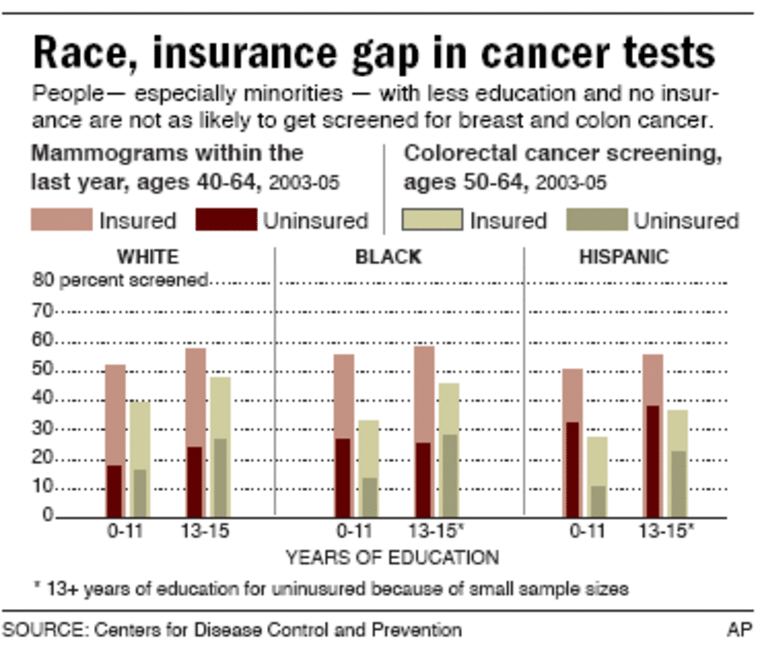Uninsured cancer patients are nearly twice as likely to die within five years as those with private coverage, according to the first national study of its kind and one that sheds light on troubling health care obstacles.
People without health insurance are less likely to get recommended cancer screening tests, the study also found, confirming earlier research. And when these patients finally do get diagnosed, their cancer is likely to have spread.
The research by scientists with the American Cancer Society offers important context for the national discussion about health care reform, experts say — even though the uninsured are believed to account for just a fraction of U.S. cancer deaths. An Associated Press analysis suggests it is around 4 percent.
Those dealing with cancer and inadequate insurance weren’t surprised by the findings.
“I would just like for something to be done to help someone else, so they don’t have to go through what we went through,” said Peggy Hicks, a Florida woman whose husband died in August from colon cancer.
Edward Hicks was uninsured, and a patchwork health care system delayed him from getting chemotherapy that some argue might have extended his life.
“He was so ill. And you’re trying to get him help and you can’t, you can’t,” said his 67-year-old widow.

The new research is being published in Cancer, the cancer society’s medical journal. In an accompanying editorial, the society’s president repeated the organization’s call for action to fix holes in the health care safety net.
“The truth is that our national reluctance to face these facts is condemning thousands of people to die from cancer each year,” Dr. Elmer Huerta wrote.
Hard numbers linking insurance status and cancer deaths are scarce, in part because death certificates don’t say whether those who died were insured.
Annual cancer death toll
An Associated Press estimate — based on hospital cancer deaths in 2005 gathered by the U.S. Agency for Healthcare Research and Quality information and other data — suggests that at least 20,000 of the nation’s 560,000 annual cancer deaths are uninsured when they die. Experts said that estimate sounds reasonable.
That’s around 4 percent of the total cancer death toll. One reason is that most fatal cancers occur in people 65 or older — an age group covered by the federal Medicare program. Another is that more than 80 percent of adults under 65 have some form of coverage, including private insurance or the Medicaid program for the poor, according to various estimates.
Some are enrolled in Medicaid or other programs after diagnosis, when the condition worsens and their finances erode. But such 11th hour coverage can be too late; early detection is the key to catching many cancers before they’ve grown beyond control, experts said.
“Insurance makes a big difference in how early you are detecting disease,” said Ken Thorpe, an Emory University health policy researcher.
In the new study, researchers analyzed information from 1,500 U.S. hospitals that provide cancer care. They focused on nearly 600,000 adults under age 65 who first appeared in the database in 1999 and 2000 and who had either no insurance, private insurance or Medicaid.
Plight of uninsured
Researchers then checked records for those patients for the five years following. They found those who were uninsured were 1.6 times more likely to die in five years than those with private insurance.
More specifically, 35 percent of uninsured patients had died at the end of five years, compared with 23 percent of privately insured patients.
Earlier studies have also shown differences in cancer survival rates of the uninsured and insured, but they were limited to specific cancers and certain geographic areas.

The new findings are consistent across different racial groups. However, the fact that whites have better survival rates cannot be explained by insurance status alone, said Elizabeth Ward, the study’s lead author.
The researchers were not able to tell if the numbers were influenced by patients’ education levels, or by other illnesses.
Experts said the study also hints at problems with quality of care after diagnosis: such as whether the patient got the appropriate operation from a high-quality surgeon, whether the tumor was thoroughly evaluated by a high-quality pathologist, and whether there was access to needed chemotherapy and radiation.
Blaming quality of care
“The differences that we see in outcomes after people are diagnosed, even among those with early stage disease, suggests that problems with quality of care may be an important reason,” said Dr. John Ayanian, professor of medicine and health care policy at Harvard Medical School. He didn’t participate in the cancer society study.
The study makes an even stronger statement about the role insurance plays in the timing of screenings and how that can raise the likelihood of a late-stage diagnosis, experts said.
A Kaiser Family Foundation survey last year of 930 households that dealt with cancer found that more than one in four uninsured patients delayed treatment — or decided not to get it — because of the cost.
Such was the case of Edward Hicks.

The retired laborer, had surgery for colorectal cancer in 2005 and was thought to be clear of the disease. Chemotherapy was suggested after the surgery, but he didn’t get it.
In February of this year, his wife grew worried when he lost energy and appetite. In April, he told her he felt a lump in his stomach.
Hicks, who lived in Fort Meade, Fla., couldn’t get an appointment with a specialist, but a family doctor checked him into a hospital and specialists saw him in late May. They said he was terminal but that chemotherapy might extend his life a little, his wife said.
She was able to get donated chemotherapy drugs from a pharmaceutical company, but it took time to arrange the treatments, which didn’t start until mid-June. Meanwhile, her husband’s health deteriorated. In July, after just a few treatments, he stopped the chemo, saying it was too hard. He died on Aug. 21, at age 64.
Friends and family told Peggy they believe he would have lived longer had he got chemo earlier, when he was stronger. She doesn’t agonize over that, she said, trusting in God’s will.
But the devil’s in her mailbox — she is facing a $21,000 hospital bill and other costs from his death.